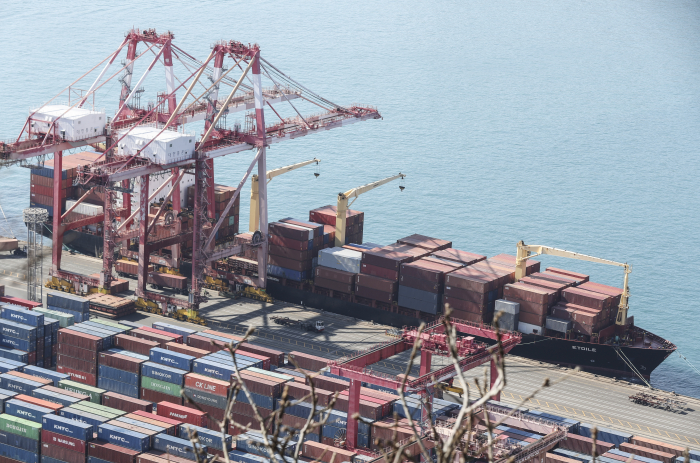S. Korea's economic growth jumps to 11-year high
The 4% rise is thanks to a pickup in consumption, strong exports and base effect
By Jan 25, 2022 (Gmt+09:00)
Samsung shifts to emergency mode with 6-day work week for executives


CJ CheilJedang to sell feed, livestock unit for $1.4 bn


Samsung Electronics' key M&A man returns; big deals in the offing


Affinity to buy SK Rent-a-Car at $572 mn, more deals expected


Keppel REIT to sell Seoul-based prime office T Tower



South Korea recorded 4% economic growth in 2021 ŌĆō its highest jump in 11 years ŌĆō according to the countryŌĆÖs central bank.
The steep rise was supported by a pickup in consumption and firm export demand. Base effect also played a role as the previous yearŌĆÖs economy was hit hard by COVID-19.
The South Korean economy grew 2.2% in 2019 but contracted 0.9% the following year. The slump was the first contraction since 1998 when the economy contracted 5.1%.┬Ā
UNWAVERING SPENDING
A pickup in consumption and record exports led the upward trend.┬Ā
Domestic consumption, which accounts for nearly half of KoreaŌĆÖs GDP, increased 3.6% last year. Not only did private spending rebound by a big margin from the 5% contraction the year before; the jump was the highest such figure since 2010's growth of 4.4%.
With the continued emergence of new COVID-19 variants, different social distancing measures were adopted throughout 2021. The measures did not dampen consumer sentiment in a tangible way as consumers and businesses alike learned to live with the shifting policies. For instance, establishments that initially suffered from the stay-at-home measures turned to providing their goods and services online.┬Ā
Household spending at restaurants and cafes also rose significantly from the year previous.┬Ā
ROBUST EXPORTS
Strong exports have also supported the economic recovery. Exports in 2021 escalated 9.7%, in sharp contrast to a 1.8% slowdown in 2020. The jump was the highest since 2011 when the figure stood at 15.4%.┬Ā
The resumption of operations at factories worldwide also boosted the exports of equipment and machinery made in Korea.┬Ā
Corporate investment continued the surge from the year earlier.┬Ā
Facilities investment rose 8.3%, the highest jump since 2017; continuing from the 7.1% increase in 2020.┬Ā
Construction investment in apartments, factories, warehouses, and bridges decreased 1.5%, extending the downturn from the 0.4% contraction seen the year before.┬Ā
Capital expenditures declined significantly, hit by rising prices of raw materials, including steel bars.┬Ā
┬Ā
By industry, the manufacturing sector ŌĆō the backbone of the Korean economy ŌĆō┬Ā increased 6.6%. That is a sharp turnaround from the year priorŌĆÖs contraction of 0.9% and the highest such rate since 2010 when the figure stood at 13.6%. The recovery in the manufacturing sector came on the back of renewed demand for exports and strong capital investment.
The service industry also rose 3.7%.┬Ā
Construction, for its part, continued the downward trend from the year prior and contracted 2.2%.┬Ā
Thanks to the economic expansion, last yearŌĆÖs per capita gross national income (GNI), or the total amount of money earned by a nationŌĆÖs people and businesses divided by its midyear population, hit a record high of $35,000.┬Ā
Write to Ik-Hwan Kim at lovepen@hankyung.com
Jee Abbey Lee edited this article.
-

-
 EconomyIn Korean food prices, everythingŌĆÖs up: Now itŌĆÖs dried seaweed's turn
EconomyIn Korean food prices, everythingŌĆÖs up: Now itŌĆÖs dried seaweed's turnApr 18, 2024 (Gmt+09:00)
-
 Foreign exchangeKorean won at 17-month low on Middle East woes, Fed rate view
Foreign exchangeKorean won at 17-month low on Middle East woes, Fed rate viewApr 16, 2024 (Gmt+09:00)
-

-



